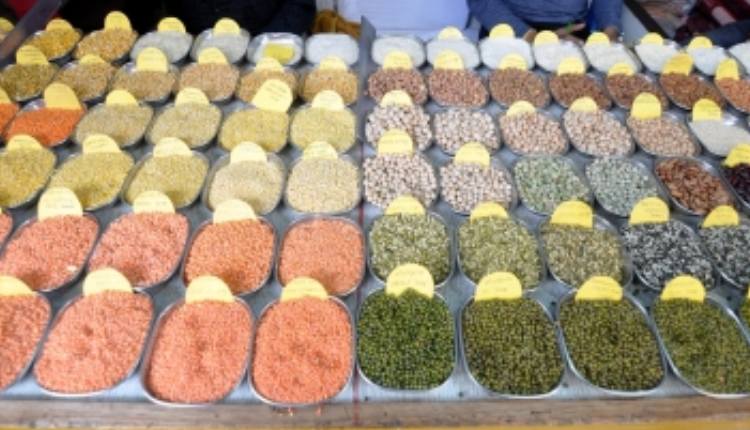New Delhi: India has significantly decreased its reliance on imported pulses from 6.61 million tonnes (MT) in 2016-17 to 2.496 MT by 2022-23 driven by government schemes, including the sharp hike in the Minimum Support Price (MSP) on major pulse crops, attracting farmers to increase cultivation, according to a NITI Aayog report.
Consequently, the area under pulses grew by 26.6 per cent, from 23.55 million hectares (Mha) in 2014-15 to 29.81 Mha in 2017-18. Between 2014-15 and 2021-22, pulse production surged from 17.15 MT to 27.302 MT, achieving a Compound Annual Growth Rate (CAGR) of 6.87 per cent, the highest recorded to date.
However, India’s import dependency surged in the fiscal year 2023-24, which was due to a freak occurrence El Niño weather pattern that damaged indigenous crops.
The total pulse production (based on aggregated data) forecasts a steady increase, reaching an estimated 34.45 MT by 2030 and 51.57 MT by 2047, up from 26.06 MT in 2022.
To achieve self-sufficiency, India must adopt a multifaceted strategy focussing on three key pillars: Value addition and reducing post-harvest losses in pulses, expanding the area under pulse cultivation (horizontal expansion), and improving productivity (vertical expansion), states the NITI Aayog report titled ‘Strategies and pathways for accelerating growth in pulses.’
Utilising just one-third of the total rice fallow area across 10 states for pulse cultivation can significantly enhance domestic production, a potential increase of up to 2.85 MT.
Further, intercropping pulses with sugarcane in regions like Uttar Pradesh and Maharashtra can unlock an additional 3 Mha of cultivable land, potentially yielding 2.4 MT of pulses.
Similarly, optimising the rice-wheat cropping system in states like Uttar Pradesh, Bihar, and Haryana can make space for an additional 4 Mha for pulse cultivation, with the potential to increase production by 2.8 MT (ICAR-IIPR 2024).
Overall, these strategies could unlock a total of 8.05 MT of additional pulse production, advancing India’s self-sufficiency, according to the report.
By addressing factors like seed, feed, and wastage, the supply of pulses could increase by 10.7 MT, improving farmer profitability and strengthening agricultural resilience, the report further states.
It also highlights that to ensure the sustainable and productive cultivation of pulses, effective management strategies for both abiotic and biotic stresses are crucial. These stresses, including drought, heat stress, pests, and diseases, can significantly impact yield and quality.
The report emphasises on developing different varieties of pulses through genetic diversity and modern breeding. India has a rich genetic diversity of pulse crops, with the ICAR–National Bureau of Plant Genetic Resources (NBPGR) holding about 70,000 accessions.
However, much of this genetic wealth is underutilised. To better use these resources, breeding programs should be modernised to efficiently extract desirable traits and develop improved varieties.
By incorporating modern tools like genomics, the process of varietal development can be accelerated, reducing the time needed to bring high performing varieties to market. Key objectives include enhancing genetic potential and improving tolerance to biotic and abiotic stresses.
A higher Varietal Replacement Rate (VRR) is crucial for improving crop yield, as newer varieties typically resist diseases, pests, and extreme weather better. To effectively reach grassroots farmers, a clear strategy is needed that includes distributing seed mini-kits and enhancing agricultural extension services through local officer training and demonstration plots. Collaborating with organisations like KVKs, FPOs, and cooperatives can also help make seed procurement and distribution more affordable and accessible, the report states.
It also highlights the need for value addition and reducing post-harvest losses in pulses which occur at various stages, from harvest to consumer consumption. These losses are primarily attributed to factors such as shattering of grains during harvesting, spillage during various operations, and mishandling. To minimise these losses and improve the overall efficiency of the pulse value chain, it is crucial to adopt advanced post-harvest technologies and best practices.
Over the past five years (2017-18 to 2022-23), India’s pulse sector has experienced a modest growth rate of about 2.5 per cent. If this current growth trend continues, it will be sufficient to meet the projected demand based on the household approach, which considers only the population growth factor.
However, the High-Income Growth (HIG) scenario presents an even more challenging outlook. In this case, a significantly steeper CAGR of 6.69 per cent is needed for the 2022-2030 period. For the longer-term goal of self-sufficiency by 2047, a CAGR of 2.7 per cent, which is slightly higher than recent growth rates, will be required from 2022 to 2047, the report added.
(IANS)
















